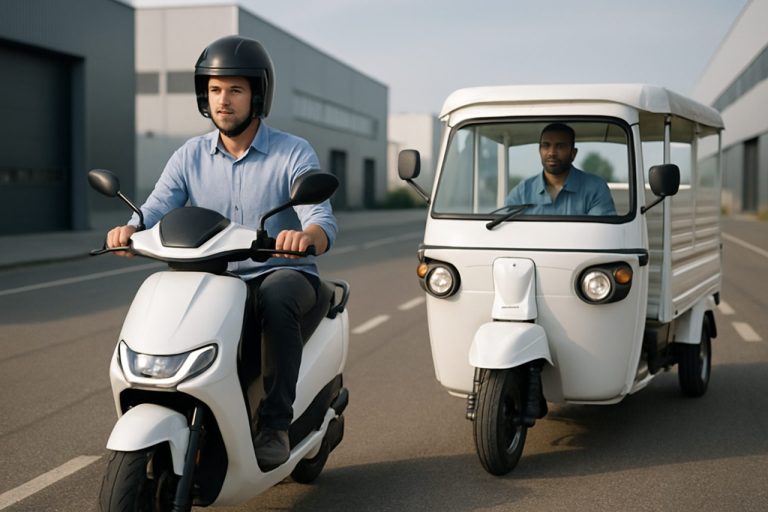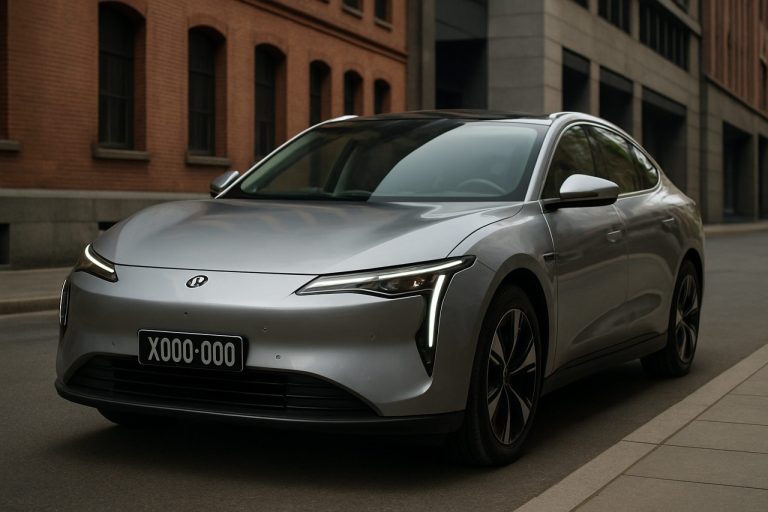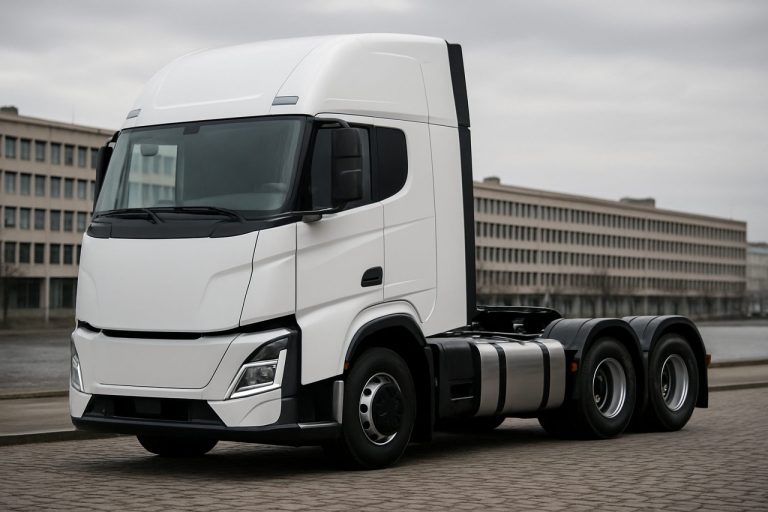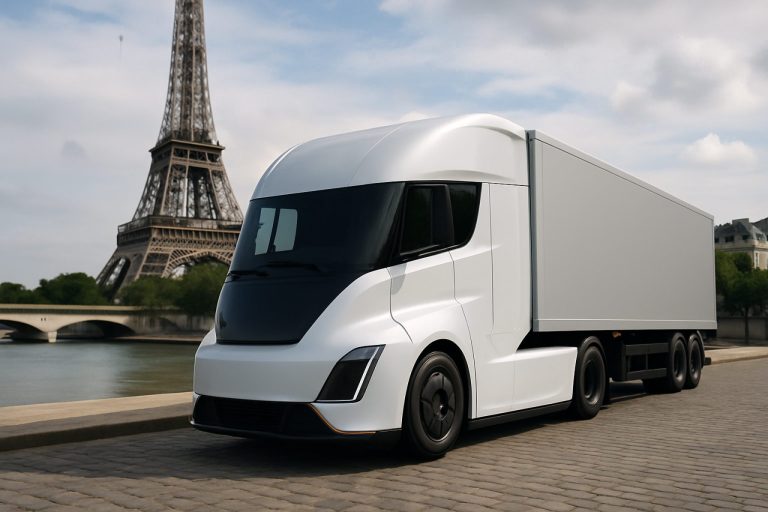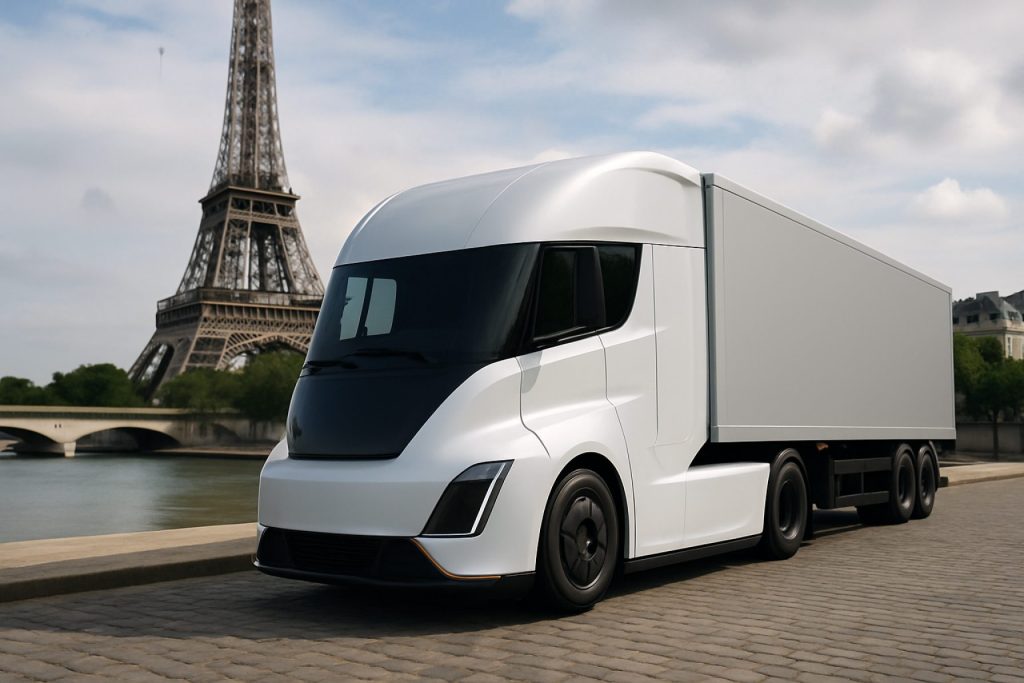
- Windrose Technology, a young Chinese electric vehicle (EV) company, plans a €175 million factory in northern France, highlighting Europe’s growing interest in green mobility.
- This bold move comes amid EU-China trade tensions over the electric vehicle market, raising questions about local industry resilience and competitiveness.
- The founder, Wen Han, aims to produce 4,000 advanced electric trucks annually in France by 2027, with ambitions to expand into the US and list on major stock exchanges.
- France sees this investment as a test of its ability to balance technological opportunity with economic autonomy and job creation.
- The partnership could reshape European technology, deepen China-EU collaboration, and influence the global EV landscape.
Eyebrows arched with intrigue, President Emmanuel Macron cradled a snow-white model truck—a futuristic beacon in his palm. Beside him, the youthful founder of Windrose Technology radiated quiet confidence. The truck’s design, with its pointed nose and driver’s seat commanding the center, blurs the line between science fiction and Europe’s present-day industry.
In a move that startled both skeptics and supporters, Wen Han, the 35-year-old mind behind Windrose, unveiled a €175 million pledge: a sprawling new factory in northern France. The announcement’s timing crackles with tension, as the European Union tangled in trade disputes with China over the surging electric vehicle market. Cautious optimism and apprehension ripple through European boardrooms, where leaders debate if China’s electric prowess signals prosperity or peril for local industries.
Windrose, barely three years old and currently with just 30 trucks on global roads, embodies audacious ambition. Han envisions the French soil humming with innovation, rolling out 4,000 of these avant-garde vehicles every year by 2027. His sights extend across the Atlantic as well, where he aims to establish a manufacturing foothold in the United States and dreams of ringing the opening bell on Wall Street—and, eventually, Paris.
The stakes are high. France, eager to cement its standing as a hub for technology and green mobility, eyes the Windrose commitment as more than just another investment—it’s a test: Can Europe blend opportunity with autonomy in an era of globalized electric dreams? Critics whisper about dependence and competition, but Han paints a portrait of collaboration and job creation, promising a new “ecosystem” to accompany each truck.
At the crossroads of geopolitical chess and cutting-edge technology, France grips the wheel and speeds ahead, placing its bets on a new chapter of electric ingenuity. Whether Windrose will usher in a renaissance or a reckoning remains uncertain, but what’s clear is this: the road to the future, with its curves and cliffs, now runs straight through the heart of Europe.
Key takeaway: As France and the EU open their doors wider to Chinese EV innovators, the world watches to see if this fusion will spark an electric revolution—one that could redefine industries, alliances, and jobs for years to come.
Chinese EV Start-Up Windrose: The Tesla Rival Reshaping Europe’s Trucking Future?
France Bets Big on Ambitious Electric Truck Pioneer
The story of Windrose Technology’s €175 million investment in a new electric truck factory in northern France opens a dramatic new chapter in Europe’s evolving relationship with Chinese electric vehicle (EV) companies. While the announcement was headline-grabbing—President Emmanuel Macron himself unveiling a futuristic concept truck—deeper facts and insights bring clarity to this high-stakes play that could redefine both European industry and the global EV landscape.
Windrose Technology at a Glance
– Young but Bold: Founded in 2021 by the Chinese entrepreneur Wen Han, Windrose is just three years old and operates with a relatively modest profile internationally—yet it already commands major attention.
– Limited but Strategic Deployment: With only around 30 trucks on global roads, Windrose’s presence is at a proof-of-concept stage, but the planned annual output of 4,000 vehicles by 2027 signals massive scaling ambition.
– Eye on Global Expansion: Windrose isn’t limiting itself to Europe. Plans for a U.S. manufacturing footprint and a stock market debut on both Wall Street and the Paris Bourse are already in motion, setting the stage for a true multinational brand.
Additional Industry Facts & Trends
– Booming European EV Market: The European electric truck segment, while still nascent, is set for exponential growth. According to IEA’s Global EV Outlook, Europe’s EV commercial vehicle sales are increasing by over 40% annually—in response to stricter emissions rules and urban sustainability goals.
– Trade Tensions Loom: The European Union recently launched investigations into possible unfair subsidies for Chinese EV makers, raising concerns about market distortions and local job impacts. Tariffs or stricter regulations could be imposed, potentially complicating Windrose’s rollout (Politico, Financial Times, Reuters).
– Local Competition: Windrose will have to contend with established European players such as Volvo, Daimler Truck, and Scania, each rolling out their own electric or hydrogen-powered commercial vehicles in response to EU Green Deal targets.
Windrose Electric Truck — Specs, Features & Pricing
– Design: The Windrose truck features a central driver’s seat reminiscent of high-speed trains or Tesla’s Semi concept. This layout optimizes visibility and aerodynamics.
– Technology: Equipped with advanced battery packs (details to be confirmed), efficient electric drivetrains, and modern connectivity—features that appeal to fleet operators seeking lower TCO (Total Cost of Ownership).
– Price Point: While official pricing isn’t public, market experts expect a competitive price to undercut established Western electric truck makers, potentially in the €150,000-€200,000 range depending on specs, incentives, and volume orders (Transport Topics, Electrek).
– Sustainability: Windrose touts net-zero emission targets for manufacturing and supply chain optimization, playing into France’s national climate objectives.
Proven Use Cases & How-To: The Fleet Operator’s Playbook
– Cost Savings: EV trucks can slash fuel and maintenance costs by up to 40% compared to diesel alternatives—a key selling point for logistics companies grappling with razor-thin margins.
– Urban Freight: Zero-emission trucks enjoy preferential access to European cities implementing ultra-low-emission zones, reducing regulatory headaches and boosting future-proofing.
– Driver Comfort: Central seating and modern EV ergonomics address driver fatigue and safety—crucial in a market plagued by driver shortages.
Pressing Questions Answered
Q: Why did France court Windrose so aggressively?
A: France is positioning itself as a magnet for EV investments, hoping to create green manufacturing jobs and reduce reliance on fossil fuels. Macron’s involvement underscores the strategic importance (Elysée Palace).
Q: Is there a security or technology transfer risk?
A: Some European lawmakers worry about overreliance on Chinese tech or unfair competition. However, Windrose promises local supply chains, R&D, and jobs—a point of ongoing scrutiny.
Q: Can Windrose really challenge local and U.S. giants?
A: The answer hinges on execution. If Windrose’s France plant launches smoothly—offering reliable, cost-effective trucks—the impact could be disruptive, mirroring Chinese success in solar panels and passenger EVs (BloombergNEF).
Controversies and Limitations
– Political Risks: Future EU trade policy could introduce tariffs or import restrictions on Chinese-backed products.
– Execution Risk: Scaling from 30 vehicles to 4,000 per year requires flawless logistics, robust supply chains, and fast workforce training.
– Battery Supply: European battery production is still ramping up—dependencies on Asian suppliers could bottleneck growth.
Market Forecast & Opportunities
– The European electric truck market is projected to grow from €500 million in 2023 to over €5 billion by 2030 (Statista, Mckinsey).
– Early movers—whether local or foreign—can lock in contracts with flagship logistics players and urban delivery fleets, cementing long-term footholds.
Life Hacks for Trucking Companies
– Tap Into Incentives: Apply for French or EU green vehicle grants early—funding may be capped and demand surges as zero-emission mandates kick in.
– Analyze TCO: Run the numbers on fuel, maintenance, and taxes; pilot programs are often available to ease the transition.
– Partner Locally: Reach out to regional mobility clusters in northern France for collaboration and knowledge sharing.
Actionable Quick Tips
– Start building relationships now with Windrose and local French agencies to access pre-order slots and pilot programs.
– Rethink logistics chains to optimize for electric vehicle charging and maintenance hubs.
– Both fleet managers and tech investors should monitor Windrose’s job postings and procurement contracts as signals of ramp-up progress.
Final Word
Windrose Technology’s French adventure represents more than a business deal: it’s a litmus test for how Europe blends innovation, industrial policy, and global competition. For companies and investors eyeing the future of trucking, staying agile, informed, and proactive will separate the leaders from the laggards.
Stay tuned to reputable business and news sources for updates, as the Windrose story could shape not just the logistics industry—but the power dynamic of the entire European and global EV economy.
